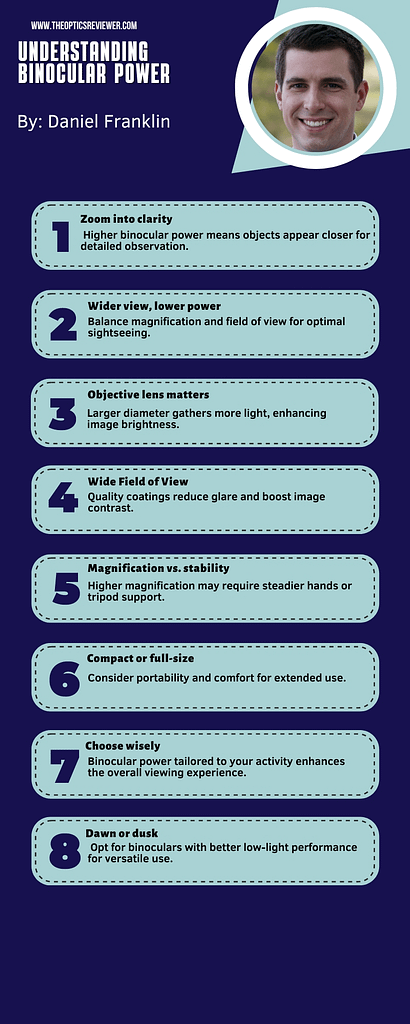Embarking on the world of optics, the term Understanding Binocular Power unfolds a fascinating journey into the intricate realm of military precision and nature exploration. Binocular power is not merely about magnification; it’s a key that unlocks detailed vistas, bringing distant landscapes or targets into crystal-clear focus. As we delve into this optical odyssey, we’ll unravel the nuanced significance of binocular power, demystifying its impact on clarity, field of view, and the overall viewing experience.
Whether you’re a seasoned birdwatcher seeking the perfect pair or a tactical professional relying on precision optics, grasping the intricacies of binocular power is paramount. Join us as we navigate the landscape of lenses, prisms, and power adjustments, empowering you to wield your binoculars with confidence and uncover the finer details of the world around you. Let’s embark on a journey where understanding binocular power becomes the lens through which we perceive the extraordinary.
Contents
- 1 Key Takeaways
- 2 What Do the Numbers on Binoculars Means?
- 3 Understanding Binocular Power
- 4 What is the Difference Between Binocular Power and Objective Lens Diameter?
- 5 What is the Relationship Between Magnification And Field of View?
- 6 How Does Magnification Affect Image Quality?
- 7 What are the Uses of Binoculars?
- 8 Conclusion
- 9 References
- 10 FAQs
Key Takeaways
- Explore the world of optics by delving into binocular power to enhance your vision and observation skills.
- Understand how binocular power magnifies images, providing a clearer and more detailed view of distant objects.
- Choose the right binocular power for your needs, considering factors like magnification, field of view, and lens quality.
- Embark on a journey of discovery as you grasp the nuances of binocular power, unlocking a new dimension in visual experiences.
What Do the Numbers on Binoculars Means?
When it comes to choosing the perfect binoculars, the numbers associated with these optical devices play a crucial role in determining their capabilities. Whether you’re a nature enthusiast, a birdwatcher, or an avid sports fan, understanding these numbers is essential for making an informed decision. Let’s unravel the mystery behind the numbers on binoculars and explore what each one signifies.
1. Magnification (e.g., 8×42):
The first number represents the magnification power of the binoculars. For instance, in the notation 8×42, the “8” indicates that the binoculars magnify the viewed image eight times larger than what the naked eye would see. Higher magnification may seem enticing, but it comes with trade-offs, such as a narrower field of view and increased sensitivity to hand movements. Striking the right balance between magnification and stability is key to a satisfying viewing experience.
2. Objective Lens Diameter (e.g., 8×42):
The second number in the notation refers to the diameter of the objective lenses in millimeters. In the example 8×42, the “42” signifies that the lenses are 42mm in diameter. Larger objective lenses gather more light, resulting in brighter images, especially in low-light conditions. However, this also means heavier and bulkier binoculars. Consider your specific needs and preferences when choosing the objective lens diameter that suits your activities.
3. Exit Pupil (calculated as Objective Lens Diameter / Magnification):
The exit pupil is a crucial factor that determines the brightness of the image in various lighting conditions. It is calculated by dividing the objective lens diameter by the magnification. For example, in 8×42 binoculars, the exit pupil is 5.25mm (42 / 8). A larger exit pupil is beneficial in low-light situations, while a smaller one may suffice in well-lit environments. Matching the exit pupil to the user’s pupil diameter ensures optimal light transmission and a comfortable viewing experience.
4. Field of View (e.g., 8×42 with 400 feet at 1000 yards):
The field of view is expressed in feet at a specific distance, usually 1000 yards. In the example of 8×42 binoculars with a field of view of 400 feet at 1000 yards, it means that the observer can see 400 feet of width at a distance of 1000 yards. A wider field of view is advantageous for tracking moving subjects or scanning large areas, making it a crucial consideration for activities like birdwatching or sports events.
The numbers on binoculars provide valuable information about their performance and suitability for different purposes. When selecting binoculars, it’s essential to strike a balance between magnification, objective lens diameter, exit pupil, and field of view based on your intended use. Armed with this knowledge, you can embark on a visual journey with binoculars that perfectly match your preferences and enhance your overall viewing experience.

Understanding Binocular Power
In a world teeming with natural wonders and breathtaking landscapes, the ability to perceive and appreciate the finer details is a gift bestowed upon those who understand the nuances of binocular power. Beyond being a mere optical device, binoculars serve as a portal to a realm where distant horizons become vivid landscapes. Let’s embark on a journey to unravel the mysteries behind understanding binocular power.
The Magnifying Magic:
At the heart of binocular power lies the enchanting ability to magnify distant objects, bringing them into sharp focus. The magnification factor, often denoted by a pair of numbers like 8×42, indicates that the object observed appears eight times closer than it would to the naked eye. This magnifying magic opens up a world of exploration, turning a simple hike or birdwatching session into an immersive experience.
Decoding the Numbers:
The digits on binocular specifications may seem like a secret code, but each number serves a purpose in shaping your viewing experience. The first number, magnification (e.g., 8x), defines how many times larger an object will appear. The second number (e.g., 42) refers to the diameter of the objective lens in millimeters, influencing the amount of light the binoculars can gather. Striking the right balance between these numbers is key to finding binoculars tailored to your needs.
Field of View:
Binocular power isn’t just about zooming in; it’s also about widening your horizons. The field of view, expressed in degrees or feet at a certain distance, determines how much of the scene you can observe at once. A broader field of view is beneficial for activities like birdwatching, ensuring you don’t miss any fleeting moments in the surrounding environment.
Lens Quality Matters:
Just as a camera’s lens quality impacts the clarity of a photograph, the lenses in binoculars play a pivotal role in image sharpness. High-quality lenses, often coated to reduce glare and enhance contrast, contribute to a clearer and more vibrant image. Understanding the intricacies of lens coatings and their impact on image quality empowers you to make an informed choice when selecting binoculars.

What is the Difference Between Binocular Power and Objective Lens Diameter?
| Feature | Binocular Power | Objective Lens Diameter |
|---|---|---|
| Definition | Magnification factor of distant objects. | Diameter of the front lenses (in mm). |
| Representation | Denoted as a pair of numbers (e.g., 8×42). | Single numerical value (e.g., 42mm). |
| Relationship to Image | Determines how much larger objects appear. | Influences the amount of light gathered. |
| Importance | Affects the level of detail and proximity. | Impacts brightness and low-light performance. |
| Examples | 8×42 means objects appear 8 times closer. | A 10×50 binocular has a 10x magnification and 50mm lenses. |
| Adjustment | Adjusted using the central focusing knob. | Fixed value; no adjustment needed. |
| Impact on Field of View | Higher magnification narrows the field of view. | Larger objective lens may provide a wider field of view. |
Understanding these key differences between binocular power and objective lens diameter is crucial for selecting binoculars that align with your specific needs and preferences. Whether you prioritize magnification for detailed observations or a wider field of view for panoramic vistas, finding the right balance enhances your overall viewing experience.
What is the Relationship Between Magnification And Field of View?
The relationship between magnification and field of view in optics is generally inverse: as magnification increases, the field of view tends to decrease, and vice versa. This phenomenon is a result of the way optics work.
Magnification refers to how much larger an object appears when viewed through an optical instrument like binoculars or a telescope. When you increase magnification, you zoom in on a smaller portion of the scene, allowing you to see more details of a distant object. However, this comes at the cost of a narrower field of view, meaning you can see less of the surrounding area.
Conversely, lower magnification provides a broader field of view, allowing you to observe a larger expanse of the scene. This is beneficial for activities such as birdwatching or observing landscapes, where a wider field of view helps in tracking moving objects or capturing a panoramic view.
The relationship between magnification and field of view is an important consideration when choosing optical instruments. It involves finding a balance that suits your specific needs, depending on the type of observation or activity you plan to undertake. In many cases, finding the right compromise between magnification and field of view ensures a satisfying and functional viewing experience.
If interested you can read more about can you bring binoculars on a plane.
How Does Magnification Affect Image Quality?
Magnification can have both positive and negative effects on image quality, and finding the right balance is crucial for optimal viewing experiences. Here’s how magnification affects image quality:
- Positive Effects:
- Detail and Clarity: Higher magnification allows you to see finer details of distant objects, bringing out more information and making observations clearer.
- Observing Distant Objects: Magnification is particularly useful when you need to observe objects that are far away, such as celestial bodies or wildlife.
- Negative Effects:
- Reduced Brightness: As you increase magnification, the amount of light entering the optical system is spread over a larger area. This can result in a dimmer image, especially in low-light conditions.
- Shakiness: Higher magnification amplifies hand movements and vibrations, making it challenging to maintain a steady image without the use of stabilization devices like tripods.
- Narrower Field of View: Increasing magnification typically narrows the field of view, making it more challenging to locate and track moving objects.
- Optical Limitations:
- Aberrations: Higher magnification can accentuate optical aberrations such as chromatic aberration and spherical aberration, leading to distortions and color fringing.
- Dependency on Optics Quality: The quality of the optical system becomes increasingly critical at higher magnifications. Lower-quality optics may not provide the level of clarity and sharpness expected.
- Personal Preference:
- Eye Strain: Extended use of high magnification can lead to eye strain, especially if the viewer is constantly adjusting their focus or dealing with a narrow field of view.
In summary, while magnification can enhance certain aspects of image quality, it comes with trade-offs. The key is to select an appropriate level of magnification based on your specific needs and the conditions in which you’ll be using the optical instrument. Consider factors such as lighting conditions, field of view, and optical quality to strike the right balance for your intended observations.
If interested you can read more about what binoculars do navy seals use.
What are the Uses of Binoculars?
Astronomy: Observing celestial bodies, such as stars, planets, and the moon.
Birdwatching: Identifying and studying birds in their natural habitats.
Wildlife Observation: Spotting and observing animals from a distance without disturbing them
.Sports Events: Enhancing the view at sporting events, races, or competitions.
Hunting: Scanning the terrain for game and assessing the environment.
Marine Activities: Navigating and observing wildlife while boating or sailing.
Concerts and Events: Getting a closer view of performances from a distance.
Nature Hiking: Exploring landscapes and appreciating natural scenery.
Security and Surveillance: Monitoring areas for security or surveillance purposes.
Stargazing: Enjoying the night sky and celestial events.
Traveling: Enhancing the view of landmarks and distant landscapes while traveling.
If interested you can read more about are binoculars legal.
Conclusion
In the realm of optics, the journey of understanding binocular power unravels a tapestry of enhanced vision and unparalleled experiences. The careful balance between magnification and objective lens diameter becomes the key to unlocking a world of clarity and detail. As we grasp the intricacies of binocular power, a new dimension emerges in our ability to observe distant landscapes, wildlife, and celestial wonders. The interplay between magnification and field of view shapes our visual encounters, guiding us to choose binoculars tailored to our specific needs.
Armed with the knowledge of understanding binocular power, we embark on adventures with sharper focus and enriched perspectives, whether exploring the intricate details of nature, immersing ourselves in the excitement of sports events, or gazing at the stars. It is through this understanding that we not only witness but actively participate in the vivid stories written across the vast canvas of our surroundings.
References
- https://link.springer.com/article/10.1007/BF00230199
- https://www.sciencedirect.com/science/article/pii/004269899090148E
- https://www.jstor.org/stable/1419206
- https://core.ac.uk/download/pdf/212800020.pdf
FAQs
Which is Better 12×50 or 10×42 Binoculars?
The choice between 12×50 and 10×42 binoculars depends on preferences: 12×50 offers higher magnification for distant details but may be heavier, while 10×42 provides a more balanced option with a wider field of view.
How Do You Read Binocular Power?
Binocular power is read as a pair of numbers, such as 8×42, where the first number (8x) represents the magnification, indicating objects appear eight times closer, and the second number (42) signifies the diameter of the objective lenses in millimeters, influencing light gathering and clarity.
What Power is Best for Binoculars?
The best power for binoculars depends on the intended use, but a magnification of 8x to 10x generally offers a versatile balance between detail and stability for various activities like birdwatching, hiking, and general observations.
Which is Stronger 10×42 or 10×50?
The 10×50 binoculars are stronger than the 10×42 counterparts, providing higher magnification and a larger objective lens diameter for increased light gathering, resulting in brighter and clearer images, especially in low-light conditions. However, the trade-off may be a slightly heavier and bulkier design.
How Do I Know If My Binoculars Are Good?
Evaluate the quality of binoculars by checking for features like clear optics, durable construction, and a comfortable grip; additionally, consider reputable brands with positive user reviews for reliability and performance. Testing them in various lighting conditions and assessing factors like magnification, field of view, and lens coatings helps ensure you’ve chosen binoculars that meet your specific needs.

